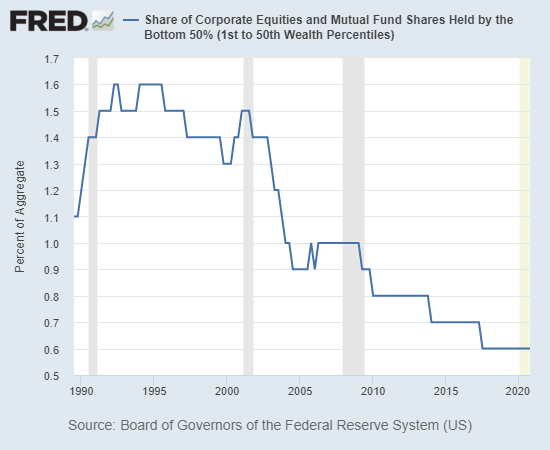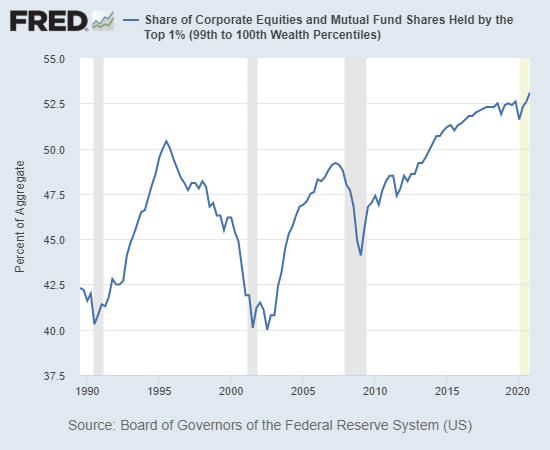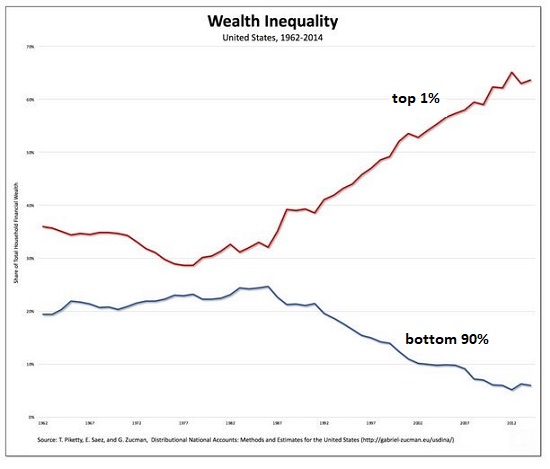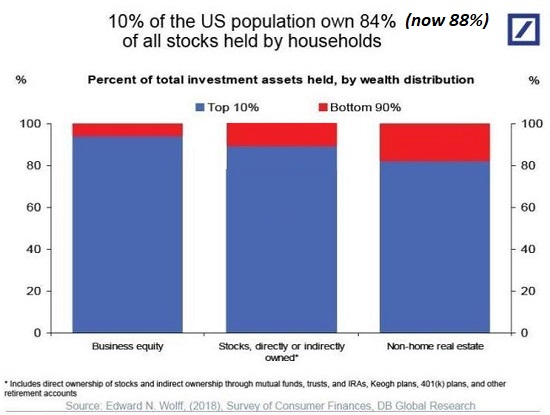
Is inflation “temporal” in your home budget? Actually? Where?
The Federal Reserve has been bleating that inflation is “temporal”– however what about the real life that we reside in, as opposed to the abstract funhouse of rigged statistics? Here’s a basic test to assist you choose if inflation is “transitory” in the real world.
Let’s start with some basic stipulations: cost is rate, there are no techniques like hedonics or alternative. No one cares if the truck stereo is better than it was 40 years back, the cost of the truck is the rate we pay today, which’s all that matters.
(Amusing, the funhouse analytical modifications never think about that home appliances that utilized to last 30 years now break down and are junked after 3 years– if we adjusted for that, the $500 washer would be tagged at $5,000 today since it has lost 90% of its sturdiness over the past 30 years.)
Second, inflation needs to be weighted to “big ticket” nondiscretionary items. The funhouse analytical trickery counts a $10 drop in the cost of a TV (which you buy every couple of years at best) as equal to a $100 rise in childcare, which you pay month-to-month. No, no, no: a 10% rise in lease, health care insurance and child care is $400 a month or roughly $5,000 a year. A 10% decline in a TV you buy every 3 years is $50. Even a 50% drop in the price of a TV ($250) is $83 per year– definitely trivial, definitely worthless compared to $5,000 in greater big-ticket expenditures.
You can bypass the new TELEVISION but not the lease, child care or healthcare. That’s the distinction between “big ticket” nondiscretionary and discretionary (meals out, 3rd TV, etc.).
Third, we reject the painfully obvious control of “owners comparable lease” for real estate costs. Housing costs are the costs we pay for lease, owning a home and paying real estate tax, insurance and maintenance costs to own the home. (Have you priced having a new roofing system put on your house by a certified, reliable contractor? No? Well, it’s ended up being a lot more pricey than it was a couple of years back. Where is that huge price leap in “owners equivalent rent”? Just how stupid does the Fed reckon we are?)
OK, here’s the test: let’s say markets finally take a deflationary dive from misestimated heights. Real estate, stocks and other danger possessions fall 30%. Trillions of dollars in “wealth” (that didn’t exist prior to the Everything Bubble inflating) has actually vanished, producing a reverse wealth effect as all the owners of these possessions feel poorer and less likely to obtain and invest. This is classically considered extremely deflationary: demand drops, prices drop.
The three billionaires who own more assets than the bottom 50% of Americans (165 million Americans) will be sobbing, but how does life change for the 165 million Americans who own a vanishingly thin piece of these assets? Does their lease drop? No, for the factors I discussed in The Fed Is Incorrect: Inflation Is Sticky: the big corporate property managers have to keep leas high to soothe their loan providers. (And let’s not forget greed: the greedy never want to lower rates, preferring to cling to the Fed’s fantasy of “temporal” trouble.)
Now let’s ask about the higher-income 150 million Americans who own houses and pay real estate tax, who pay healthcare insurance, college tuition and costs, childcare and elderly care. Even if there is a deflationary crash in stocks and real estate, what are the odds the overall costs of owning and maintaining your home will drop significantly?
What are the odds that local government will let property taxes drop with appraisals? Shall we be sincere and say no!.?.!? If realty valuations plunge, then property tax rates will rise to compensate. Or other “innovative” fees will be enforced to make up the shortfall in tax revenues.
What about child care? What are the odds that childcare costs will drop 30%? Shall we be sincere and say absolutely no!.?.!? The costs paid by child care companies just go up, and so those who don’t charge adequate (minimal suppliers) will close down, producing a scarcity of supply that raises prices.
What about elderly care? Will helped living facilities suddenly drop 30% just because property bubbles pop? No. The costs of assisted living march higher no matter what property appraisals and rate of interest do.
What about health care? Will all those expenses drop 30% since properties declined? No. Everybody exposed to real-world pricing of healthcare will be paying more.
However what about the roofing contractor? Won’t they charge 30% less? The greatest expenditures for the contractor are employees settlement insurance coverage, liability insurance coverage, special needs insurance coverage, FICA (Social Security and Medicare) and healthcare insurance coverage, and none of those will drop a single dollar even if stocks drop 30%.
Just as 85% of city government costs are labor-related, most of the expenses of the roofer are labor-related. The roof products dropping a couple of bucks may lower the cost by a few portion points, however the material costs are based upon the expenses of the makers, distributors, truckers, and so on, and these are also based on labor-related expenditures, taxes, insurance coverage and health care– none of which will drop a dime, despite what asset rates do.
Financial expert Michael Spence elucidated the distinction in between tradable and untradable goods and services. If you want your washer fixed, that service in untradable, as shipping your broken washer to China for repair work is not financially practical. As labor costs rise in China and other offshore economies, that raises costs even for tradable items.
Most of necessary services are untradable and the costs are dependent on “huge ticket” costs which can not decrease without imploding the economy and government: taxes, insurance coverage, health care, child care, elderly care, and so on can not drop 30% since they’re based on labor costs, extremely lucrative systemic friction (Huge Pharma, the Higher Education Cartel, Big Ag, healthcare and other quasi-monopolies) and the need for ever-higher tax earnings to supply services which the general public demands.
Let’s likewise ponder the repercussions of the severe concentration of wealth and income in the top 5% of U.S. households. The leading 10% own roughly 85% of all wealth, and the leading 1% own more than half the financial wealth.
Any significant drop in financial possessions will have practically no effect on the bottom 90% due to the fact that they don’t own enough of these properties to be consequential. So the deflationary impact of the reverse wealth result will be focused in the discretionary costs of the top 10%: the luxury imported cars, the $100 per plate suppers (those $60 bottles of white wine accumulate), the $500/day resort holiday, the $2,500/ week AirBnB rental, etc.
. The declines in the expense of these discretionary high-ends might well be noteworthy, however there are thresholds listed below which costs can not drop. The high-end restaurant has similarly high-end expenditures, and so minimal suppliers will close, leaving only those few who can preserve profitability as need for luxury dining craters.
The resort has high expenses as well, and when profitability has been lost, resorts will close much like other marginal suppliers. Supply diminishes together with need, and the survivors keep costs high enough or they too will close.
So the vital “big ticket” expenses will keep rising and the discretionary luxuries just the leading 10% can manage will drop– however not by much as all those high-end providers have the same high fixed expenses.
So to recap the test: what are the chances of these “huge ticket” expenditures dropping 30% if property costs drop 30%?
Taxes: no.
Healthcare: zero.
Childcare: no.
Elderly care: zero.
Expenses of working: no.
As for real estate: the mortgage doesn’t drop if the marketplace worth of your home drops 30%, and any decreases in insurance coverage will be modest. The expenses of upkeep won’t drop much, either, and might in fact increase as the supply of proficient workers decreases. (Nothing is more expensive than the “inexpensive” repair work that has to be redone correctly.)
Rents may drop in areas no one wants to live any longer, however rents will rise in locations individuals do want to live.
The bigger point here is the long economic cycles have actually turned. The 40-year decrease in rates of interest has actually turned, whether we confess or not. The 40-year decline in the costs of items due to financialization (lower interest rates, greater speculative properties) and globalization has turned. The 40-year growth of the labor force has turned. The 40-year decrease of oil/fuel/resources prices has actually turned. The 40-year fantasy that we can depend upon other countries for our vital resources and elements is waning.
Untradable products and services, cost thresholds, resource security, completion of financialization/ globalization and declining rates of interest matter. The dream that the leading 10% can prop up the economy by loaning and investing the phantom wealth of insanely overvalued property bubbles is waning.
Is inflation “temporal” in your family budget plan? Truly? Where?




< img align ="center"src=" https://www.oftwominds.com/photos2021/wealth-top1.png "/ > If you discovered worth in this content, please join me in seeking services by ending up being a $1/month client of my work via patreon.com.
My new book is offered! A Hacker’s Teleology: Sharing the Wealth of Our Diminishing Planet 20% and 15% discount rates (Kindle $7, print $17, audiobook now readily available $17.46)
Read excerpts of the book for free (PDF).
The Story Behind the Book and the Intro.
Current Podcasts:
Charles Hugh Smith on the Age of Speeding Up Expropriations (38 min) (FRA Roundtable Insight)
Covid Has Actually Activated The Next Great Financial Crisis (34:46)
My recent books:
A Hacker’s Teleology: Sharing the Wealth of Our Shrinking Planet (Kindle $8.95, print $20, audiobook $17.46) Check out the very first section for free (PDF).
Will You Be Richer or Poorer?: Profit, Power, and AI in a Distressed World
(Kindle $5, print $10, audiobook) Check out the very first section free of charge (PDF).
Pathfinding our Destiny: Preventing the Final Fall of Our Democratic Republic ($5 (Kindle), $10 (print), ( audiobook): Check out the first area for free (PDF).
The Adventures of the Consulting Theorist: The Disappearance of Drake $1.29 (Kindle), $8.95 (print); read the first chapters free of charge (PDF)
Cash and Work Unchained $6.95 (Kindle), $15 (print) Read the first area for free (PDF).
End up being a $1/month customer of my work through patreon.com.
NOTE: Contributions/subscriptions are acknowledged in the order received. Your name and e-mail remain confidential and will not be offered to any other individual, business or firm.
|
Thank you, Paul B. ($5/month), for your splendidly generous subscription to this website– I am greatly honored by your assistance and readership. |
Thank you |
, John B. ($54), for yet another marvelously generous contribution to this site– I am greatly honored by your assistance and readership. |

